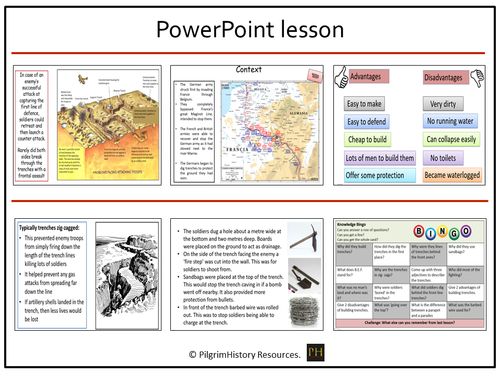


World War I
The aim of this lesson is to understand why building trenches led to a static war of attrition.
It focuses on some key questions: Why did they build trenches in the first place? Why were the trenches built in zig zags? Why were there lines of trenches behind the front ones and how did they use the barbed wire and sandbags?
Through video footage and visual aids, students build up a picture of what a trench looked like, the equipment a soldier would have to carry to build them and the advantages and disadvantages of protecting themselves in a trench.
Key knowledge Bingo for the plenary will test students understanding of the lesson.
The lesson is enquiry based with a key question of ‘How frightening was the First World War?’ using a lightbulb posed at the start of the lesson and revisited throughout the lesson and this unit of study to show the progress of learning.
The resource includes retrieval practice activities, suggested teaching strategies and differentiated materials, and comes in Powerpoint format if there is a wish to adapt and change.
Something went wrong, please try again later.
Lovely lesson, easy to follow, lots of thinking and student involvement. Used with my year 9 SEN class. Thank you
amazing lesson used with my year 9's to get across the key info of what a trench was <br /> <br /> Thanks<br />
Report this resourceto let us know if it violates our terms and conditions.
Our customer service team will review your report and will be in touch.